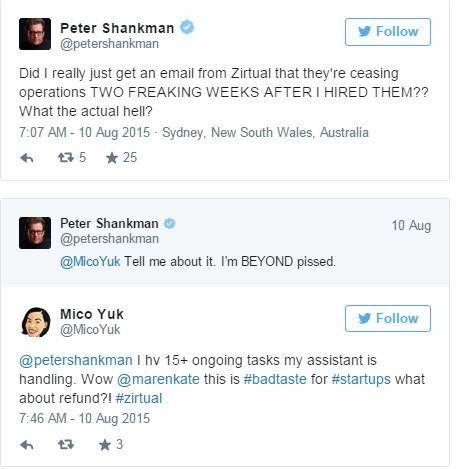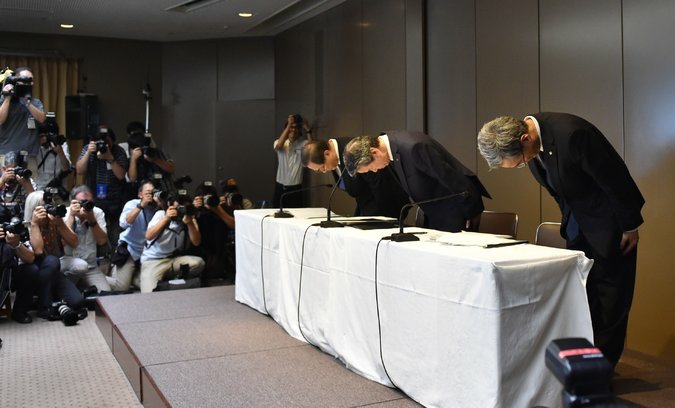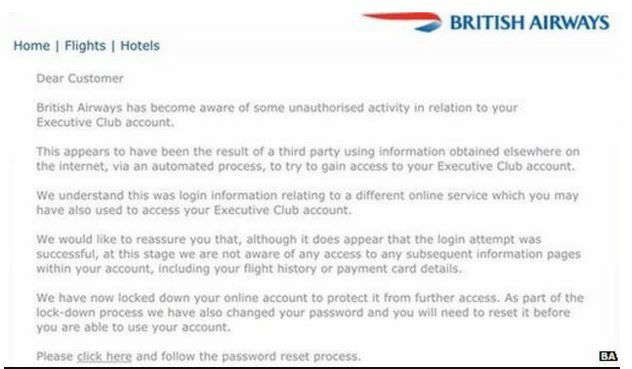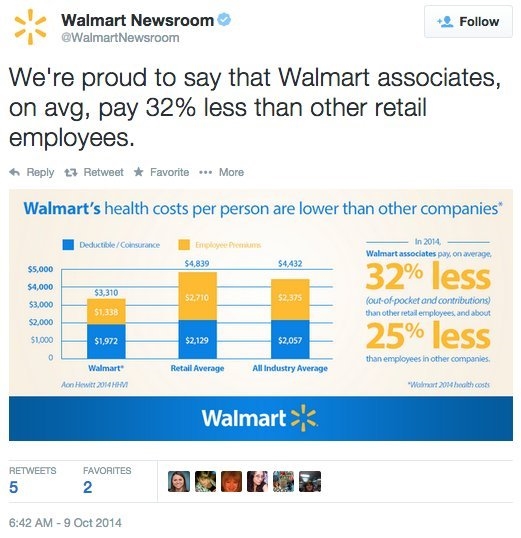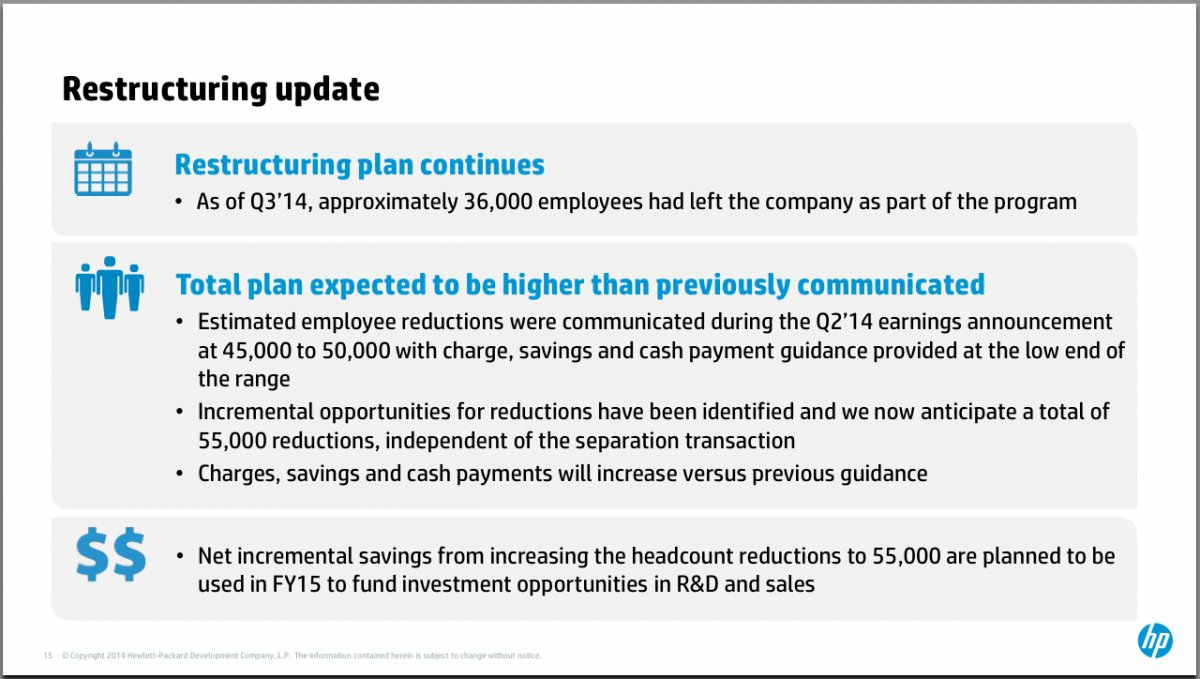T-Mobile and Experian CEOs Address Data Breach
 A data breach at credit card processor Experian has exposed information about millions of T-Mobile customers, and the CEO is "incredibly angry" about it. Although credit card and banking account numbers weren't stolen, names, addresses, emails, and social security numbers were.
A data breach at credit card processor Experian has exposed information about millions of T-Mobile customers, and the CEO is "incredibly angry" about it. Although credit card and banking account numbers weren't stolen, names, addresses, emails, and social security numbers were.
In a "Letter to Consumers" on the company's website, John Legere wrote, "I've always said that part of being the Un-carrier means telling it like it is. Whether it's good news or bad, I'm going to be direct, transparent and honest."
Experian also published a statement on its website. In a bulleted list, the company explained what happened and then offered several FAQ's under simple headings: "About the Incident," "What Does This Mean for Me?" "I'm Still Confused," and "What We're Doing to Make It Right."
Although Legere offered two years of free credit monitoring, customers are no longer trusting the company's service. The CEO responded on Twitter: "I hear you. I am moving as fast as possible to get an alternate option in place by tomorrow."
Discussion Starters:
- Legere uses a conversational style in his Letter to Consumers. Do you consider this appropriate for the situation, unprofessional for a CEO, or something else?
- Analyze the organization of Experian's web statement. What works well, and what could be improved?
- What principles of bad-news messages from Chapter 8 do these examples follow?
United Airlines Announces Executive Departures
Three United Airlines executives left the company because of an investigation into whether unprofitable flights were added to suit NY/NJ Port Authority Chairman David Samson. The question is whether United executives exchanged flights to Samson's home for funding from the Port Authority.
The company gave this statement about the departures of CEO Jeff Smisek, the vice president of communications and government affairs, and the senior vice president of corporate and government affairs:
"The departures announced today are in connection with the company's previously disclosed internal investigation related to the federal investigation associated with the Port Authority of New York and New Jersey. The investigations are ongoing and the company continues to cooperate with the government."
The statement was also part of a longer press release, which focused on newly appointed CEO Oscar Munoz. In a message to employees, Munoz expressed his hopes for the company's future.
Discussion Starters:
- Assess United's press release and the CEO's message to employees. What are the communication objectives, and how well do these communications meet those objectives?
- How do you think employees are reacting to the news? What else should the management team communicate internally? How should they reach employees throughout the company?
Zirtual Ends Service, and Communication Is Criticized
After starting business just 18 months ago, Zirtual has abruptly announced its demise. Customers and the 400 employees of the virtual personal assistant company were surprised and angry.
Business Insider points out the irony in the shoddy communication. Just three weeks ago, Zirtual CEO Maren Kate Donovan discussed in a Fortune magazine article how important it is to keep employees "in the loop":
"My team is without a doubt my biggest asset, which is something I never take for granted. So it's vital to keep them in the loop during periods of change and consistently show support. Because what my employees don't know could ultimately hurt the entire business. The sooner your team knows about upcoming shifts in the company-the better.
"Additionally, give your employees ample time to adjust, as change in a company can often lead to people feeling unstable in their positions. And be transparent."
Zirtual has backpedaled, indicating that it's taking a "pause":
"The decision to pause operations was the most difficult message I've ever had to deliver. I have spent every waking hour over the past four years working to build the most vibrant community of empowered workers only to have to let them know at once that we could no longer service them."
The upside is that Startups.co will be taking over operations, so some service and some employees will be reinstated.
Discussion Starters:
- How, if at all, could this situation have been avoided? It's understandable that Zirtual scaled up too quickly and had to cease operations, but how could the communication have been better?
- Now that Zirtual will be bought out, what should Startups.co and the former CEO communicate?
Kraft's Direct Recall Notice
In a straightforward press release, Kraft announced a recall of its Singles products. The headline is clear and specific, and the main point is up front. The notice begins as follows:
THE KRAFT HEINZ COMPANY VOLUNTARILY RECALLS SELECT VARIETIES OF KRAFT SINGLES PRODUCTS DUE TO POTENTIAL CHOKING HAZARD
Only 3-Lb. and 4-Lb. Packages of Kraft Singles Included in Recall
NORTHFIELD, Ill.--(BUSINESS WIRE)--Jul. 31, 2015-- The Kraft Heinz Company is voluntarily recalling select code dates and manufacturing codes of Kraft Singles individually-wrapped slices due to the possibility that a thin strip of the individual packaging film may remain adhered to the slice after the wrapper has been removed. If the film sticks to the slice and is not removed, it could potentially cause a choking hazard.
This Smart News Release features multimedia. View the full release here:http://www.businesswire.com/news/home/20150731005896/en/
Kraft calls this a "Smart News Release" because it has more than text. A table and images show how to find affected products.
One line in the release expresses the company's sentiment: "We deeply regret this situation and apologize to any consumers we have disappointed."
Discussion Starters:
- Complete an audience analysis for this situation. What is important for Kraft to know as it navigates this recall?
- Analyze the entire release for clarity, tone, organization, and so on. Which principles for bad-news messages from Chapter 8 are followed, and which are not?
- What else, if anything, should the company communicate at this point? Is the apology sufficient?
Toshiba Resignations
Toshiba has announced the resignation of the chief executive and seven other board members in the wake of an accounting scandal. An independent report found that the company had overstated earnings by $1.2 billion over seven years.
In a news conference, Chief Executive Hisao Tanaka said, "I apologize from my heart to all our stakeholders. To clarify management responsibility, I resign my posts as president and member of the board of directors as of today."
In the Japanese culture, it is traditional to bow deeply, particularly when admitting wrongdoing. Tanaka also said, "The responsibility lies in the management, including myself. As a response, I am stepping down from the post as the CEO and president."
The committee that issued the report found "systematic involvement, including by top management, with the goal of intentionally inflating the appearance of net profits." The committee also wrote, "Within Toshiba, there was a corporate culture in which one could not go against the wishes of superiors."
In a company statement, Toshiba promises changes as a result of the committee's findings, including disclosing the investigation report and correcting past financial statements.
Discussion Starters:
- What differences do you see in Toshiba and Toyota's news conferences (in 2010) compared to American companies' public hearings, such as GM's?
- How much confidence do you have in Toshiba after hearing this news? What can the company do to rebuild the brand?
Microsoft's Latest Layoff Email
 Microsoft CEO Satya Nadella sent an email to employees announcing a major layoff-7,800 employees. This is in addition to the 18,000 employees laid off last year.
Microsoft CEO Satya Nadella sent an email to employees announcing a major layoff-7,800 employees. This is in addition to the 18,000 employees laid off last year.
Satya's email breaks the news starting in the third paragraph:
"We anticipate that these changes, in addition to other headcount alignment changes, will result in the reduction of up to 7,800 positions globally, primarily in our phone business. We expect that the reductions will take place over the next several months.
"I don't take changes in plans like these lightly, given that they affect the lives of people who have made an impact at Microsoft. We are deeply committed to helping our team members through these transitions."
Nadella goes on to describe changes in the company's phone, mapping, and advertising businesses. His email is considerably better than Stephen Elop's long, rambling message in 2014, which revealed the bad news in the 11th paragraph.
Still, U.S. Republican Senator Jeff Sessions criticized Microsoft's layoffs:
"Microsoft has just announced it is laying off another 7,800 workers, on top of the 18,000 layoffs it has already announced. This means Microsoft has shed roughly 1/5th of its workforce in the past couple years. And yet Microsoft, perhaps more than any other major U.S. company, has claimed it suffers from a shortage of American workers and must therefore import more H-1B foreign guest workers."
Discussion Starters:
- Assess Nadella's email. What works well, and what could be improved? Consider the audience and purpose when you analyze the tone, word choice, organization, and so on.
- What's your view of Senator Sessions' criticism. Is this fair given the current layoffs?
Blue Bell CEO Explains Layoff Decision
In an emotional message, Blue Bell Creameries CEO and President Paul Kruse explains the "agonizing decision" to furlough some employees and lay off others. The company is struggling to regain ground after a recall stopped production.
So far, the video post on Blue Bell's Facebook page received 1,022 likes.
In a press release, the company described which and how many employees are affected:
- Employees who are essential to ongoing operations and cleaning and repair efforts will continue to work but have their pay reduced.
- A second group of employees will be placed on partially paid furlough. They will be paid a substantial portion of their current pay, with the expectation that they will return to work as production resumes.
- Because there is not a clear timeline for when production will resume, and because supply and distribution will be limited when it does, a third group of employees will be laid off.
In total, "Approximately 1,400 employees will be furloughed, and approximately 750 full-time and 700 part-time employees-or 37 percent of the total Blue Bell workforce of 3,900-will be laid off."
Discussion Starters:
- Assess Kruse's video message: which principles of bad-news messages does he follow? How well does he deliver the news?
- Next, assess the press release: organization, word choice, tone, and so on. What works well, and what would you suggest the company improve?
- If you were an employee affected by this decision, how do you think you might react?
Amtrak Posts Messages About Crash
 An Amtrak train traveling from Washington, D.C., to New York derailed, leaving at least six people dead and more than 200 injured. The investigation has started with the obvious question about speed.
An Amtrak train traveling from Washington, D.C., to New York derailed, leaving at least six people dead and more than 200 injured. The investigation has started with the obvious question about speed.
Passengers describe a horrible scene with items and bodies flying around the cars. Some people are still missing.
In the meantime, Amtrak posted two messages to its Facebook page. The first simply announced the accident and provided an emergency number for people to call. The second gave more information and conveyed the company's regrets:
Wednesday, May 13 2:45am
We are deeply saddened by the loss of life from Amtrak Northeast Regional Train 188 that derailed north of Philadelphia Tuesday evening. We ask the news media to be respectful of our customers, our employees, and their families.
There were approximately 238 passengers and 5 crew members on board. Individuals with questions about their friends and family on this train should call the Amtrak Incident Hotline 800-523-9101. Amtrak has also established a Family Assistance Center to work closely with family and friends of individuals on the train. Local emergency responders are on the scene and an investigation is ongoing.
On Wednesday, May 13, modified Amtrak service will be provided between Washington and Philadelphia, Harrisburg and Philadelphia, and New York and Boston. There will be no Amtrak service between New York and Philadelphia, but New Jersey Transit will honor Amtrak tickets between New York City and Trenton.
Other Amtrak Service between New York and Albany-Rensselaer; New Haven and Springfield, Mass., and other points will operate.
Additional updates will be provided when available.
Discussion Starters:
- Assess Amtrak's Facebook post. What works well, and what changes would you suggest?
- What else, if anything, should the company do or say at this point?
SurveyMonkey Announces Death of CEO
 Dave Goldberg was the CEO of SurveyMonkey and husband of Sheryl Sanberg, COO of Facebook and author of the book "Lean In." At just 47, Golberg died of head trauma after falling off a treadmill at a gym in a private villa in Mexico, where he was vacationing with family and friends.
Dave Goldberg was the CEO of SurveyMonkey and husband of Sheryl Sanberg, COO of Facebook and author of the book "Lean In." At just 47, Golberg died of head trauma after falling off a treadmill at a gym in a private villa in Mexico, where he was vacationing with family and friends.
According to The New York Times, Goldberg was "well regarded as an entrepreneur and mentor and was the less famous half of one of Silicon Valley's most prominent power couples." The news came as a shock and caused speculation about the cause. But a spokesperson for the prosecutor's office in the Mexican town said plainly, "he fell off the treadmill and cracked his head open." The incident may lead to new measures treadmill safety.
SurveyMonkey posted this announcement on its website:
Discussion Starters:
- How do you assess Survey Monkey's statement? Which principles of delivering bad news in Chapter 8 are followed, and which are not? Consider the audience, purpose, and so on.
- Should the company say or do anything else at this point?
Companies Respond to Data Breaches
British Airways, GitHub, and Uber have responded to potential security attacks in different ways.
British Airways' Executive Club members complained of unknown hotel bookings and phone number changes, but the company said only a few frequent flier members were affected. Critics say that BA shouldn't ask users to click a link to change their password, which is confusing because this is a common phishing scheme. The company sent an email to Club members.
GitHub blamed China for a DDoS (distributed denial of service) attack, but a representative from the Chinese government denied the claim:
"It is quite odd that every time a website in the US or any other country is under attack, there will be speculation that Chinese hackers are behind it. I'd like to remind you that China is one of the major victims of cyber-attacks."
Although users complained that their Uber accounts were hijacked, the company denied a breach:
"We take any issue of this nature very seriously and after investigating have found no evidence of a breach at Uber.
"Attempting to fraudulently access and use Uber accounts is illegal and we notify the authorities about such activity.
"We would like to remind people to use strong and unique usernames and passwords and to avoid reusing the same credentials across multiple sites and services."
Discussion Starters:
- Compare messages from British Airways (above), GitHub, and Uber. How do you account for the differences? Consider the industries, company culture, circumstances, and so on.
- If companies such as British Airways shouldn't use an email link for people to change their passwords, what is a better approach?
Metro-North Accident Kills Six
Another Metro-North train accident caused several deaths-this time a collision with an SUV on the tracks in Valhalla, NY. It's unclear why Ellen Brody's car stopped in the train's path, and the driver behind her didn't understand why she didn't back up.
As with other Metro-North incidents, the organization provides service updates, but little human connection. The Metro-North news page only references a collision and provides transportation options. The Twitter feed also posts only service updates.
The MTA CEO did issue this statement: "The entire MTA family's thoughts are with the relatives and loved ones of the victims of last night's tragedy. We are tremendously saddened by this tragic accident, and our thoughts and prayers go out to all of them."
But the MTA press releases are cold statements of the facts:
Discussion Starters:
- Should the MTA do anything differently at this point? To be fair, this accident seems out of the organization's control, unlike the derailment in 2013.
- Compare the New York MTA's response to DC's statement when a woman died of smoke inhalation. What's different? Should the MTA write a similar apology?
Sears CEO Explains Store Closings
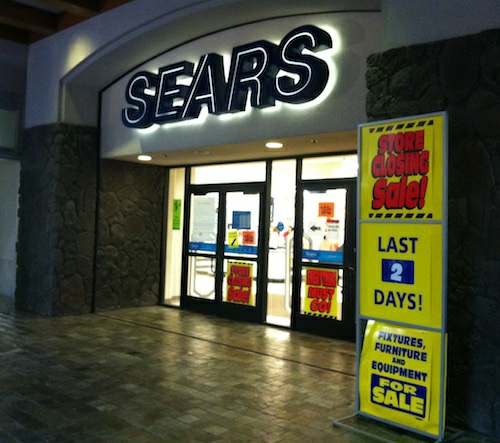 Our local Ithaca, NY, Sears store closed last month-one of more than 200 in 2014. Sears Holdings Co. CEO Eddie Lampert explained the decision in a post on the company's website. Part of his message is about keeping underperforming stores open as long as possible:
Our local Ithaca, NY, Sears store closed last month-one of more than 200 in 2014. Sears Holdings Co. CEO Eddie Lampert explained the decision in a post on the company's website. Part of his message is about keeping underperforming stores open as long as possible:
"I am proud of the work associates contribute to serve our members in all of our stores and believe that the decision to keep some of our worst performing stores open in the past, despite their low or negative levels of profit, was the right one because we kept people employed and served our members. We have experimented with different formats, different levels of investment and different processes to bring about a better result. Given changing circumstances, both in the retail industry and in our company, we can no longer afford, nor justify keeping these stores open."
In a second blog post a day earlier, Lampert writes, "Is something a 'failure' if other successes come from it?" He responds to a Crain's Chicago Business article that criticized Sears for being too merchandise-driven when it needs to evolve as a market-driven company.
"Success takes both hard work and a willingness to keep what works and adjust what doesn't based upon what our members want. This is what we and our competitors needed to do back in 1988. It's what so many people across our company are doing today, and it's how we are going to bring Sears and Kmart forward into tomorrow."
If nothing else, Lambert's determination shows in the number of his blog posts. Between 2005 and 2013, he wrote no more than three posts per year. In 2014, he's blogging between two and nine times a month.
Discussion Starters:
- How does Lambert use principles of persuasion discussed in Chapter 7 in his "Moving Forward" post about the store closings?
- Compare Lambert's early posts on the blog (2005 and 2006) with his most recent. What differences do you notice, and how can you account for them?
NYC News Conference About Ebola
A news conference at Bellevue Hospital addressed the situation of the NYC doctor diagnosed with Ebola.
Mayor Bill de Blasio opened the conference by immediately allaying fears:
"Today, testing confirmed that a patient here in New York City had tested positive for Ebola. The patient is now here in Bellevue Hospital. We want to state at the outset – there is no reason for New Yorkers to be alarmed. Ebola is an extremely hard disease to contract. It is transmitted only through contact with an infected person's blood or other bodily fluids – not through casual contact. New Yorkers who have not been exposed to an infected person's bodily fluids are not at all at risk. And we want to emphasize that New York City has the world's strongest public health system, the world's leading medical experts, and the world's most advanced medical equipment.
"We have been preparing for months for the threat posed by Ebola. We have clear and strong protocols, which are being scrupulously followed and were followed in this instance. And Bellevue Hospital is specially designed for isolation, identification, and treatment of Ebola patients. Every hospital in the city is prepared in the event that other patients come forward."
Referring to the situation in New York as "a world apart from the scene that unfolded in a Dallas hospital last month," a New York Times article complimented Bellevue Hospital's handling of Dr. Craig Spencer's case. Using verbs such as "whisked," the writer explains how the New York hospital improved protocols for handling Ebola patients. The Texas Health Presbyterian Hospital is still recovering from criticism.
Discussion Starters:
- Watch the news conference or read the full transcript. What principles of persuasion did the mayor and governor use to assure the public of safety?
- What different roles did people play during the news conference? Who covered which information?
- What else could have been included in the conference? Is anything missing?
Toyota Airbag Recalls
 Blaming its supplier, Toyota has recalled about 247,000 vehicles equipped with faulty airbags. This is part of the estimated 16 million cars affected by the Japanese-made Takada inflators since 2008. In a press release, the company explains the recall process:
Blaming its supplier, Toyota has recalled about 247,000 vehicles equipped with faulty airbags. This is part of the estimated 16 million cars affected by the Japanese-made Takada inflators since 2008. In a press release, the company explains the recall process:
TOYOTA INTENSIFIES EFFORT TO REPAIR VEHICLES EQUIPPED WITH TAKATA AIRBAG INFLATORS
TORRANCE, Calif., October 20, 2014 – Toyota Motor Sales, U.S.A., Inc., today announced plans to conduct a supplemental safety recall of approximately 247,000 Toyota Corolla, Matrix, Sequoia, Tundra and Lexus SC vehicles produced from 2001 to 2004 and equipped with front passenger airbag inflators supplied by Takata Corporation. This action intensifies Toyota's efforts to reach customers and remedy previously recalled vehicles, and a small number of newly included vehicles, in certain geographic areas that appear to warrant immediate action, based on testing by the supplier. (Continue reading.)
The National Highway Traffic Safety Administration (NHTSA) provides a list of affected vehicles, most before 2004.
Discussion Starters:
- Read Toyota's press release. How is the company trying to distance itself from the defect and promote the Toyota brand?
- What else would you suggest Toyota do at this point to manage the news?
Walmart Worsens Healthcare PR
Blaming health care costs, Walmart is cancelling healthcare insurance for about 30,000 part-time employees who work fewer than 30 hours per week. The news is bad enough, but the company exacerbated the negative press with a tweet Huffington Post calls "bizarre and ill timed."
Walmart employees protested this decision and the 19% increase in premiums that workers will pay under Walmart's new plans. Under anonymity, a Mississippi employee told Business Insider, "Most of the employees where I work are struggling as it is, and to take away more of the very meager benefits we get is atrocious." An employee in Missouri said, "While this is a cost cutting [move] for Wal-Mart, is it a slam in the face for employees. Just another thing they are taking away from them." She is worried about coworkers "barely - and I mean barely - keeping their heads above water, even after working for Wal-Mart for almost 20 years."
Sally Welborn, Walmart's senior vice president of benefits, told reporters that Home Depot and Target also recently cut part-timers' benefits: "Health care costs just keep going up for all of us." The decision also is explained in a blog post. However, this tweet provided no context and seemed odd, given the news about cuts and increased costs, neither of which are reflected in this chart:
Discussion Starters:
- Read Walmart's blog post. Which are the most and least convincing arguments?
- In what ways do you support employees' perspectives?
- PR Daily's Matt Wilson summarizes the tweet situation: "Sometimes, Twitter just isn't the right medium for complex communications." Wilson also tells us that the tweet didn't link to the blog post, which provides more context. What advice would you give Walmart as the company considers tweeting after a report of bad news?
Layoffs Coming at Hewlett Packard
To investors, Hewlett Packard's plan to split into two companies may be good news, but employees should be worried. HP will become two companies: 1) personal printers and PCs, and 2) corporate software and hardware. (This follows the news of eBay spinning off PayPal.)
CEO Meg Whitman explains the rationale:
"In short, by transitioning now from one HP to two new companies, created out of our successful turnaround efforts, we will be in an even better position to compete in the market, support our customers and partners, and deliver maximum value to our shareholder."
This slide warns of 55,000 layoffs to come. Original estimates were 5,000, but they grew to 45,000 - 50,000.
Discussion Starters:
- Revise the slide so it's easier to understand.
- The slide seems to be prepared for an external audience. How should HP be communicating internally? Consider the medium, message, and timing.
Zappos Does Damage Control About Layoffs
 According to Zappos CEO Tony Hsieh, the company's plans to lay off 30 employees started an "avalanche" of false reports. Part of the backlash comes from concern about Hsieh's promise to invest in Las Vegas. In 2012, he started the Downtown Project and poured $350 million into real estate and 300 start-ups that, today, employ about 800 people.
According to Zappos CEO Tony Hsieh, the company's plans to lay off 30 employees started an "avalanche" of false reports. Part of the backlash comes from concern about Hsieh's promise to invest in Las Vegas. In 2012, he started the Downtown Project and poured $350 million into real estate and 300 start-ups that, today, employ about 800 people.
The perception isn't helped by an open resignation letter written by David Gould. Gould left a teaching job at the University of Iowa to join the Downtown Project. This is excerpt from the letter:
"Tomorrow, many of the people who merged their voices with yours will find themselves without a job. While their names have yet to be revealed, the disillusioned expressions I conjure up are keeping me awake tonight. This group will undoubtedly include numerous young adults, who have not yet found your good fortune. As they have naively purchased homes and started families, this decision will impact them greatly."
In response to the letter and other criticism, Hsieh puts the layoffs in perspective:
"We eliminated 30 positions from our corporate support staff. We directly employ more than 300 people, and through our investments there are over800 people working in our porfolio of companies in downtown Vegas. Later this week we are adding about 30 positions when we open up The Market and we plan to continue to grow our total job count."
A 2008 ZDNet article compliments Zappo's transparency when it laid off 8% of its workforce six years ago.
Discussion Starters:
- Read Hsieh's entire response. Which arguments do you find most and least persuasive?
- Read the 2008 ZDNet article. What has changed in social media in the past six years?
- Zappos usually wins points for its corporate culture. How, if at all, do you think that reputation factors into the media coverage?
Microsoft's Indirect Layoff Email
 Microsoft's long layoff email is a great example of how the indirect style simply doesn't work for many bad-news messages. Starting with "Hello there" and ending with the predictable "our success in the future," the email has 1,111 words, 14 paragraphs, and no headings.
Microsoft's long layoff email is a great example of how the indirect style simply doesn't work for many bad-news messages. Starting with "Hello there" and ending with the predictable "our success in the future," the email has 1,111 words, 14 paragraphs, and no headings.
NY Magazine writer Kevin Roose did a great job editorializing the message, voicing the reader's frustration. In this segment, he criticizes the jargon and begs for the main point:
"'Financial envelope'? You don't literally keep all of Microsoft's cash in a big envelope, do you? Anyway, 'changes.' I know what that's supposed to mean. Now, please, give it to me straight: tell me I'm fired."
The news is finally clear in the 11th paragraph of Stephen Elop's email. Elop is the executive vice president of Microsoft's Devices & Services.
"We plan that this would result in an estimated reduction of 12,500 factory direct and professional employees over the next year. These decisions are difficult for the team, and we plan to support departing team members' with severance benefits."
The email is a jargon- and slang-filled bore. In addition, Elop would benefit from a more natural, conversational style, avoiding words such as "whereas" and "unto." Here's a paragraph that a business communication student could easily revise:
"As part of the effort, we plan to select the appropriate business model approach for our sales markets while continuing to offer our products in all markets with a strong focus on maintaining business continuity. We will determine each market approach based on local market dynamics, our ability to profitably deliver local variants, current Lumia momentum and the strategic importance of the market to Microsoft. This will all be balanced with our overall capability to invest."
Discussion Starters:
- What advice would you give Elop as he plans his next email to staff? Consider principles in Chapter 4 in the text.
- Just for fun, rewrite Elop's email. Imagine that you're his corporate communication VP, and he asks for your advice. Reorganize and try to make the message sound more, well, human.
Home Depot Finally Confirms Security Breach
After investigating a possible security breach since September 2, Home Depot has confirmed what could be the largest breach yet. While Target's recent incident affected 40 million customers, Home Depot's could approach 60 million.
The company has communicated with customers:
- "Message to our customers" on the website home page links to a statement in which Home Depot apologizes, tells us that which purchases were affected, and offers help.
- In an FAQ, the company tries to reassure customers and tells us about the investigation process and how we can find help.

A New York Times blog post quoted an Internet security expert: "Honestly, Home Depot is in trouble here." Eric Cowperthwaite was highly critical of the company: "This is not how you handle a significant security breach, nor will it provide any sort of confidence that Home Depot can solve the problem going forward."
I'm a little worried: I've shopped at Home Depot recently. I registered for the free AllClear protection and received this email.
Discussion Starters:
- Read Home Depot's statement and FAQs. What inspires confidence, and what makes you worry?
- The breach was discovered and reported from a third party, and it took Home Depot a week to confirm the breach. Should the management team address this in its communications somehow?
- Assess the email I received from Home Depot. Do you find it confusing?
Another Case for Direct Bad-News Messages
 The 9th edition of the book challenges the traditional advice of presenting bad-news using the indirect organizational style. In an HRB blog post, "How to Start a Conversation You're Dreading," Peter Bregman offers examples of when beating around the bush doesn't work.
The 9th edition of the book challenges the traditional advice of presenting bad-news using the indirect organizational style. In an HRB blog post, "How to Start a Conversation You're Dreading," Peter Bregman offers examples of when beating around the bush doesn't work.
A performance issue with someone got out of hand because he delayed speaking with her about it. Then, the news took so long during a conversation that she had to break it herself. In another example, a CEO's long introduction to bad news was called a "complete waste of time."
We avoid giving bad news because we aren't good at it and because we're worried about the other person's reactions. But the other's reactions are likely worse when we aren't direct.
Jamie Dimon's letter about his cancer has the news right up front: "I wanted to let you know that I have just been diagnosed with throat cancer."
Discussion Starters:
- How do you feel about giving bad news? If you tend to delay it, why?
- Think about a time when you received bad news or negative feedback.



